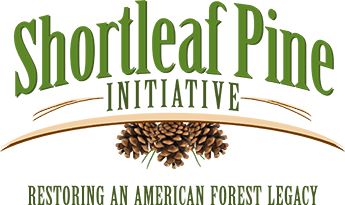|
Shortleaf research, newspaper articles, fact sheets, conference proceedings, literature reviews, and brochures.
Harvest Amounts and spatial distribution of downed woody debris, snags, windthrow, and forest floor mass within streamside management zones occurring in shortleaf pine stands five years after harvesting
Amounts and spatial distribution of downed woody debris, snags, windthrow, and forest floor mass within streamside management zones occurring in shortleaf pine stands five years after harvesting
Liechty, H. (2007). Amounts and spatial distribution of downed woody debris, snags, windthrow, and forest floor mass within streamside management zones occurring in shortleaf pine stands five years after harvesting. Shortleaf pine restoration and ecology in the Ozarks: proceedings of a symposium; 2006 November 7-9; Springfield, MO. Northern Research Station, General Technical Report NRS-P-15. Retrieved from https://www.fs.fed.us/nrs/pubs/gtr/gtr_nrs-P-15.pdf#page=172  Changes in Organic Matter And Nutrients in Forest Floor After Applying Several Reproductive Cutting Methods in Shortleaf Pine-Hardwood Stands
Changes in Organic Matter And Nutrients in Forest Floor After Applying Several Reproductive Cutting Methods in Shortleaf Pine-Hardwood Stands
Liechty, H. O., & Shelton, M. G. (2004). Changes in Organic Matter And Nutrients in Forest Floor After Applying Several Reproductive Cutting Methods in Shortleaf Pine-Hardwood Stands. Southern Research Station, General Technical Report SRS-74. Retrieved from https://www.srs.fs.usda.gov/pubs/gtr/gtr_srs074/gtr_srs074-liechty001.pdf Grayson, K. J., Wittwer, R. F., & Shelton, M. G. (2002). Cone characteristics and seed quality 10 years after an uneven-aged regeneration cut in shortleaf pine stands. Southern Research Station, General Technical Report SRS-48. Retrieved from http://www.srs.fs.usda.gov/pubs/viewpub.php?index=3140  Dense undergrowth reduces feller-buncher productivity in shortleaf pine plantations
Dense undergrowth reduces feller-buncher productivity in shortleaf pine plantations
Granskog, J. E., & Anderson, W. C. (1981). Dense undergrowth reduces feller-buncher productivity in shortleaf pine plantations. Southern Forest Experiment Station, Research Note SO-274. Retrieved from https://www.srs.fs.usda.gov/pubs/rn/rn_so274.pdf Cain, M. D., & Shelton, M. G. (2002). Does prescribed burning have a place in regenerating uneven-aged loblolly-shortleaf pine stands? Southern Journal of Applied Forestry, 26(3), 117-123. Retrieved from http://www.ingentaconnect.com/content/saf/sjaf/2002/00000026/00000003/art00001  Early succession bird communities of group-selection openings and clearcuts in the Ouachita Mountains, Arkansas and Oklahoma
Early succession bird communities of group-selection openings and clearcuts in the Ouachita Mountains, Arkansas and Oklahoma
Tappe, P. A., Thill, R. E., Peitz, D. G., & Perry, R. W. (2004). Early succession bird communities of group-selection openings and clearcuts in the Ouachita Mountains, Arkansas and Oklahoma. Southern Research Station, General Technica Report SRS-74. Retrieved from https://www.srs.fs.usda.gov/pubs/gtr/gtr_srs074/gtr_srs074-tappe001.pdf  Effect of prescribed burns and shelterwood cutting on reproduction of shortleaf and Pitch Pine
Effect of prescribed burns and shelterwood cutting on reproduction of shortleaf and Pitch Pine
Little, S., & Moore, E. (1950). Effect of prescribed burns and shelterwood cutting on reproduction of shortleaf and Pitch Pine. Northeastern Forest Experiment Station, Station Paper (35). Retrieved from https://www.nrs.fs.fed.us/pubs/sp/sp_ne035.pdf  Effect of Thinning on Partitioning of Aboveground Biomass in Naturally Regenerated Shortleaf Pine (Pinus Echinata Mill.)
Effect of Thinning on Partitioning of Aboveground Biomass in Naturally Regenerated Shortleaf Pine (Pinus Echinata Mill.)
Sabatia, C. O. (2007). Effect of Thinning on Partitioning of Aboveground Biomass in Naturally Regenerated Shortleaf Pine (Pinus Echinata Mill.). Proceedings of the 14th biennial southern silvicultural research conference. Gen. Tech. Rep. SRS–121. Asheville, NC: U.S. Department of Agriculture, Forest Service, Southern Research Station. 577-578. Retrieved from https://www.srs.fs.fed.us/pubs/gtr/gtr_srs121/gtr_srs121_577.pdf Shelton, M. G. (2004). Effects of Retaining a Hardwood Component During the Application of Uneven-Aged Silviculture in a Shortleaf Pine-Oak Stand: 6-Year Results. Southern Research Station, General Technical Report SRS-74. Retrieved from http://www.treesearch.fs.fed.us/pubs/6524 Stignani, R. H. (1986). Esthetic considerations in management of shortleaf pine. Proceedings of symposium on the shortleaf pine ecosystem; 1986 March 31-April 2; Little Rock, AR. Monticello, AR: Arkansas Cooperative Extension Service: 248-262. Retrieved from http://www.srs.fs.usda.gov/pubs/45857 |

